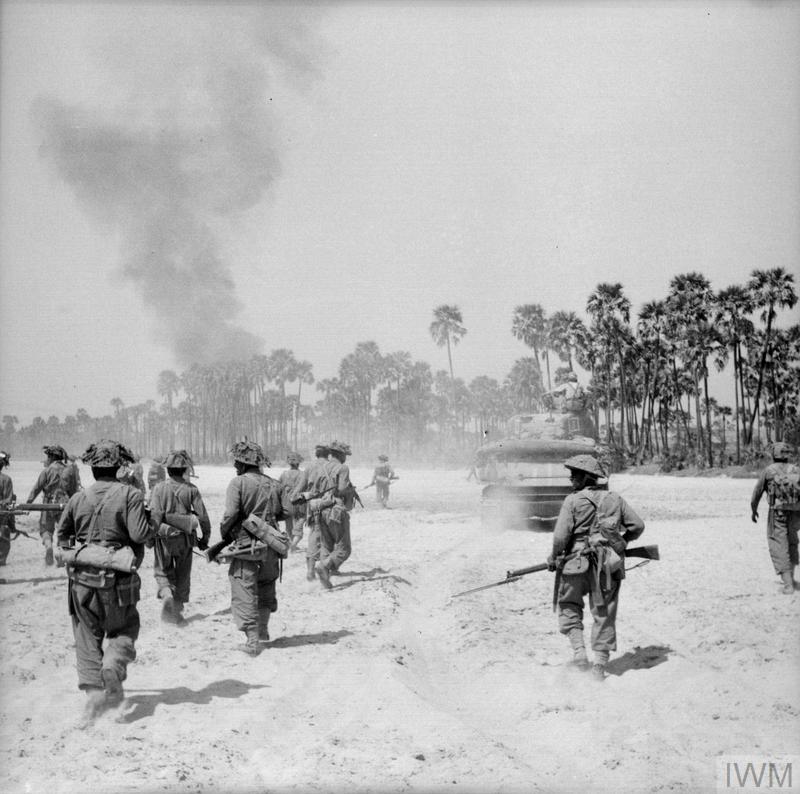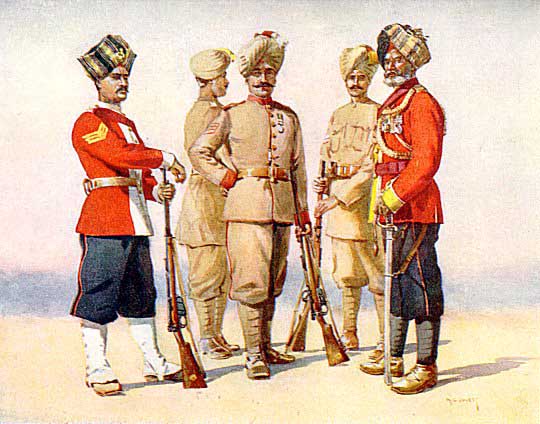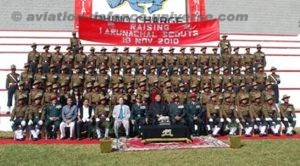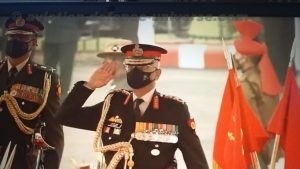Rajputs are Hindu warriors from the Rajputana region, who take great pride in their military virtues and possess enormous pride in their valour, bravery and their ancestry.
The British impressed by their exceptional skill and bravery, raised the first Rajput regiment in 1775. It was named the 5th Bombay Sepoys. In 1778 it was re-designated as 9th Bombay Sepoys. It was formally assembled in the year 1921as a part of the British Indian Army.
- Active: 10 January 1775 – Present
- Role Type: Line Infantry
- Military Role: Infantry
- Battalion Size: 25 battalions
- Battle cry: Raja Ramchandraji ki Jai (Victory to Lord Rama).
- Regimental Centre: Delhi Cantonment.
- Regimental Insignia: Bugle and Cords, below a pair of crossed Katars (Rajput daggers).
- Motto: Veer Bhogya Vasundhara (The Brave Enjoy the Earth).
- Regimental Language: Hindi.

The past and origin
Guarding the Indian borders for more than two hundred years the Rajputana Rifles is the oldest battalion of the Indian Army. Raised in 1775 it was formally assembled when six previously existing regiments were merged to form the 6th Rajputana Rifles in the year 1921. In 1945 the digit 6 was dropped from the title. In 1947 the regiment was transferred to the newly independent Indian Army.
The Regiment has participated in some of the bloodiest battles and many theatres in India and the world. The soldiers fought in France, Egypt, Palestine, Iraq, Persia and East Africa. During the First and Second World Wars, the regiment lost about 30,000 soldiers.
The Rajputs fought courageously during World War I which earned them 37 battle honours – the highest by any other regiment of the time.
Interesting Fact about The Soldiers: Many soldiers of the regiment often sport enormous and unique moustaches which make them look different from any other soldiers of the world. They look furious and send shivers down the enemy’s spine.
The regiment composition:
The soldiers of the regiment constitute young Rajputs and Jats from Rajputana and Muslims from Punjab.

The Regimental Battalions
There are 25 Units:
- 1st Battalion was elevated to the status of Guards, becoming 3rd Battalion, Brigade of the Guards (1st Raj Rif).
- 2nd Battalion (formerly 120th Rajputana Infantry)
- 3rd Battalion (formerly 122nd Rajputana Infantry (God’s Own))
- 4th Battalion (formerly 123rd Outram’s Rifles)
- 5th Battalion (formerly 125th Napier’s Rifles)
- 6th Battalion
- 7th Battalion
- 8th Battalion
- 9th Battalion
- 11th Battalion
- 12th Battalion (formerly 31st Rajputana Rifles)
- 13th Battalion
- 14th Battalion
- 15th Battalion
- 16th Battalion
- 17th Battalion (former State Forces unit or Imperial Service Troops)
- 19th Battalion
- 20th Battalion
- 21st Battalion
- 22nd Battalion
- 23rd Battalion (now 12 Para)
- 9 Rashtriya Rifles
- 18 Rashtriya Rifles
- 43 Rashtriya Rifles
- 57 Rashtriya Rifles
Post -Independence important operations and missions by Rajputana Regiment
Some of the major operations conducted by this regiment include:
- The 5 Rajputana Rifles (Napier’s) was a proud part of the Custodian Force of India (CFI) in Korea during the Korean War of 1950-53.
- The 4 Rajputana Rifles were invited to be a part of the replacement troops during the 1961-64 Congo crisis
- Indo- Pakistan war 1948.
When Pakistan militants had occupied a major part of the river Kishanganga in the Titwal sector. The 6 Rajputana Rifles were called to capture the territory, the soldiers without fearing for their lives rushed forward taking down the enemy, special mention of, Havildar Piru Singh who despite being hit by a hand grenade in the face rushed forward to take down that machine-gun post. He was posthumously awarded by Param Vir Chakra. - Jammu and Kashmir 1965
The regiment has also been a major part of battles like Punch, Asal Uttar, Charwa, Basantar and Mynamati. - Indo-Pak war of 1971:
In February the 7th Battalion of the Rajputana Rifles celebrated the 50th anniversary of their victory at the battle of Mynamati during the Indo-Pak war of 1971. It is celebrated as ‘Battle Honour Day’ as on this day the courageous soldiers won a furiously fought battle against Pakistan. - Kargil War 1999:
The highly challenging task of capturing the highest peak, Topopoing Top, was assigned to 2 Rajputana Rifles. It was critical as it overlooked the Srinagar – Leh highway and it made the Indian Army an easy target from the hilltop. Havildar Digendra Kumar was tasked to capture the first and last bunkers on the Hill. His firing allowed his men to take the enemy down, he was shot 14 times though he managed to kill 48 Pakistani soldiers single-handedly. For his bravery, he was awarded the Mahavir Chakra.
While Captain Batra and his team reclaimed control of Peak 5140, he led from the front and confronted Pakistani intruders in hand-to-hand combat. He led one of the most difficult mountain warfare operations in Indian military history. He was posthumously awarded the Param Vir Chakra, India’s highest and most prestigious award for valour.
Decorations Honours and Awards Post -Independence by the Rajputana Rifles
The Rajputana Rifles also have the distinction of being a recipient of six Victoria Crosses earned in the pre-independence era.
With an illustrious and extremely rich history of courage, the Rajputana Rifles, displayed indomitable spirit and resoluteness in extreme adversity winning several; decorations and Awards.
These include:
Theatre Honour
Jammu & Kashmir, 1965.
Battle Honours
- Punch,
- Asal Uttar
- Charwa
- Basantar
- Myanamati
Honours and Awards
- Param Vir Chakra,
- 1 Ashok Chakra,
- 1 Padma Bushan,
- 11 Param Vishisht Seva Medals,
- 10 Maha Vir Chakras,
- 8 Kirti Chakras,
- 11 Ati Vishisht Seva Medals,
- 1 Uttam Yudh Seva Medal,
- 41 Vir Chakras,
- 25 Shaurya Chakras,
- 112 Sena Medals (including Bar),
- 36 Vishisht Seva Medals,
- 2 Yudh Seva Medals,
- 85 Mention-in-Despatches
- 55 Arjun Awards.
The Rajputana Museum in Delhi
The Rajputana Rifles Regimental Museum in the Rajputana Rifles Centre is located inside the Delhi Cantonment. The museum covers the rich history of the regiment, covering around 7000 square feet in size and displays the history of the regiment from its inception. The museum exhibits weapons and uniforms and narrates the history through large format images and audiovisual film. It has even been compared to the Imperial War Museum in London.
New Developments
India, with China and Pakistan as its neighbours, has a constant threat of insurgency and terrorist attacks. To counter this threat a new battalion was raised. These soldiers undergo special training for highly specialized operations. The soldiers post the training are apt at laying ambushes in hills and mountains, detecting and disarming IEDs, carrying out cordon and search operations and carrying out operations to neutralize terrorists in heavily populated neighbourhoods.


























































































































